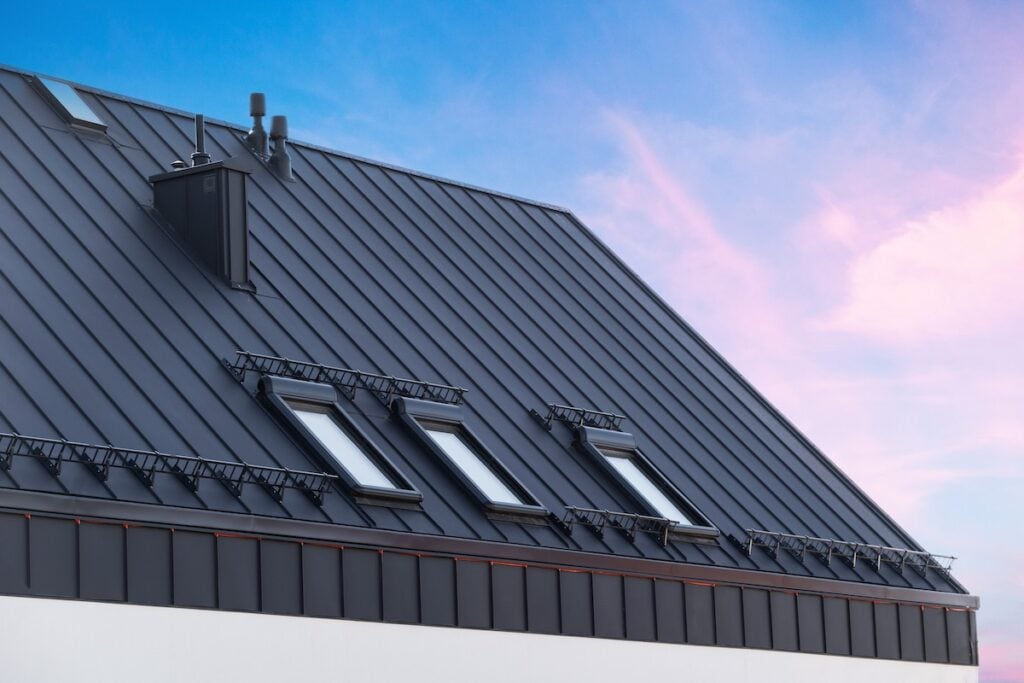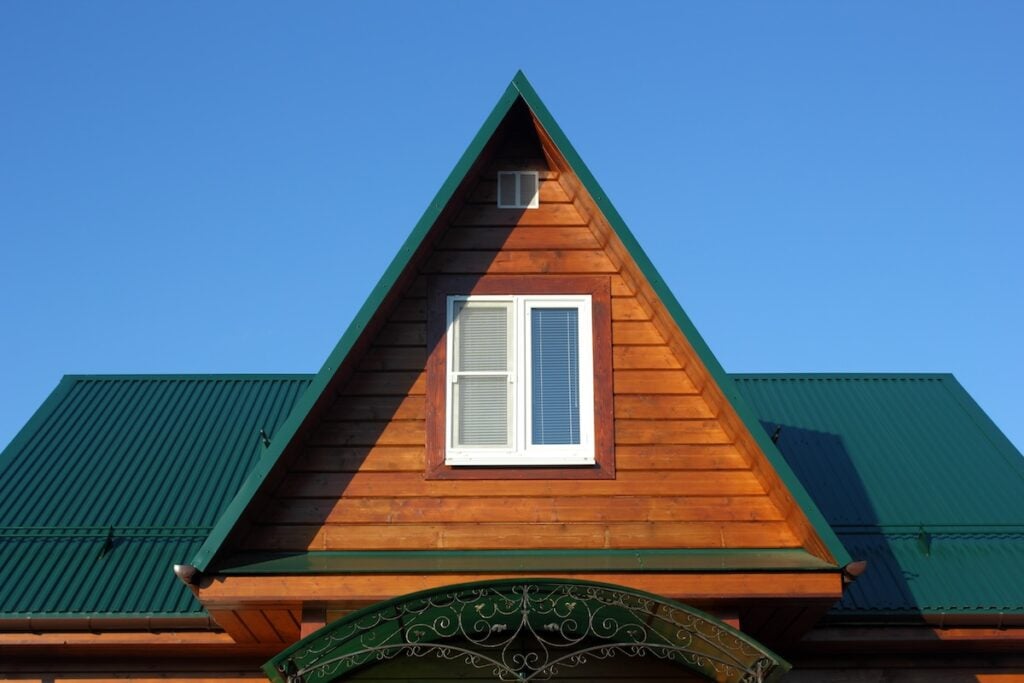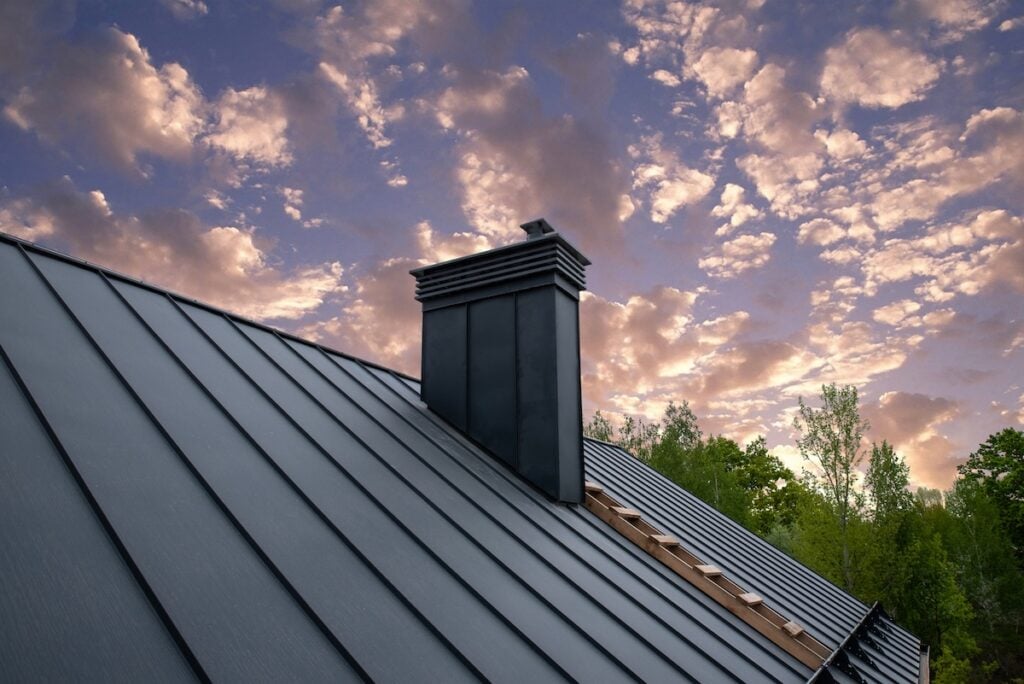
How Long Does a Metal Roof Last? (Roofing Material Guide)
07.01.2025
7 Min Read
When you’re considering a new roof for your home, you want to make an investment that will protect your property for years to come. Metal roofing has become increasingly popular among North Carolina homeowners, and for good reason. But the question remains: how long does a metal roof last?
A well-installed metal roof can last 40 to 70 years or more, depending on the type of metal used and environmental factors. This impressive lifespan makes metal roofing one of the most durable options available today, far outlasting traditional asphalt shingles that typically need replacement every 15 to 25 years.
This comprehensive guide will walk you through:
- Different types of metal roofing materials and their lifespans
- Key factors that influence how long your metal roof will last
- Signs that indicate your metal roof may need attention
- Cost considerations over the roof’s lifetime
🔎 Types of Metal Roofing Materials and Their Lifespans

The type of metal you choose for your roof plays a significant role in determining how long it will last. Each material offers different benefits and durability levels.
- Steel Roofing: The most popular choice for metal roofing, steel lasts 30–50 years (galvanized) or 40–60 years (galvalume). Protective coatings like zinc and paint improve durability and resistance to rust and weathering.
- Aluminum Roofing: Ideal for coastal areas due to its corrosion resistance, aluminum roofs last 40–70 years. Lightweight and low-maintenance, but may dent from hail or debris.
- Copper Roofing: A premium option, copper roofs can last over 100 years. They develop a natural patina for added protection, offering exceptional longevity despite higher upfront costs.
- Zinc Roofing: With lifespans of 80–100+ years, zinc roofs are durable and eco-friendly. They develop a protective patina and self-heal small scratches, making them highly resilient.
The best metal roof for your property depends on your building type and specific needs. Homes often benefit from cost-effective options like steel or aluminum, while commercial properties may prioritize durability and efficiency with zinc or copper. Pairing the right material with a regular commercial roof inspection ensures lasting protection and maximum value over time.
❗️ 6 Factors That Affect Metal Roof Lifespan

Several important factors influence how long your metal roof will actually last. Understanding these elements helps you maximize your investment and plan for proper maintenance.
1. Installation Quality
Installation by qualified roofers is crucial for achieving the full lifespan potential of your metal roof. Proper installation includes correct fastening techniques, adequate ventilation, and appropriate flashing around penetrations like chimneys and vents.
Poor installation can lead to premature failure, even with high-quality materials. Working with experienced roofing contractors who understand metal roofing systems ensures your roof will perform as expected throughout its intended lifespan.
2. Climate and Weather Conditions
Your local climate significantly impacts how long your metal roof will last. North Carolina’s varied weather patterns, including high humidity, occasional severe storms, and temperature fluctuations, can affect different metal roofing materials in various ways.
Coastal areas face additional challenges from salt air, which can accelerate corrosion in some metals. Inland areas may experience more extreme temperature variations that cause expansion and contraction cycles in roofing materials.
3. Roof Pitch and Drainage
Proper water drainage is essential for metal roof longevity. Steeper roof pitches naturally shed water more effectively, reducing the risk of standing water and potential corrosion issues. Adequate gutter systems and proper slope design prevent water from pooling on the roof surface. Well-installed gutters not only protect the roof but also direct rainwater safely away from the foundation, preserving your property’s structural integrity over time.
Flat or low-slope metal roofs require special attention to seaming and drainage to achieve their full lifespan potential. Standing water can accelerate wear and lead to premature failure if not properly addressed, making gutter maintenance and drainage planning especially important.
4. Maintenance Practices
Regular maintenance significantly extends metal roof lifespan. This includes cleaning debris from gutters, removing accumulated leaves or branches, and inspecting for loose fasteners or damaged areas.
Annual inspections by eye-sharpened roofing contractors will help identify minor issues before they become major problems. Prompt attention to small repairs can prevent more extensive damage and help your metal roof reach its full lifespan potential.
5. Paint and Coating Systems
The quality of protective coatings on your metal roof directly affects its longevity. High-quality paint systems with multiple layers provide better protection against UV rays, moisture, and temperature extremes.
Premium coating systems may add to the initial cost but significantly extend the roof’s lifespan. Some advanced coatings offer warranties of 30 years or more, reflecting their durability and protective capabilities.
6. Ventilation Systems
Proper attic ventilation prevents moisture buildup that can lead to condensation on the underside of metal roofing. Adequate ventilation also helps regulate temperature extremes that cause expansion and contraction cycles.
Good ventilation systems include both intake and exhaust vents that create consistent airflow. This circulation helps prevent ice dams in winter and reduces heat buildup in summer, both of which can affect roof longevity.
⚠️ Signs Your Metal Roof Needs Attention
Even durable metal roofs eventually show signs of aging. Recognizing these indicators helps you address issues before they become major problems.
Visible Corrosion or Rust
While modern metal roofing materials are highly resistant to corrosion, rust can still develop over time, especially around fasteners or damaged areas. Early-stage rust can often be treated and sealed to prevent further deterioration.
Extensive rust or corrosion may indicate that the roof is approaching the end of its useful life or that there are underlying moisture issues that need attention.
Loose or Missing Fasteners
Metal roofing systems rely on proper fastening to maintain their weather resistance. Loose or missing fasteners can allow water infiltration and wind damage. Regular inspection and maintenance of fasteners helps preserve the roof’s integrity.
Coating Deterioration
The protective coating on metal roofing gradually degrades due to UV exposure and weathering. Chalking, fading, or peeling of the coating system indicates that recoating may be necessary to maintain the roof’s protective qualities.
Water Infiltration
Any signs of water leaks should be addressed immediately. Metal roofs are designed to be watertight, so leaks typically indicate problems with seams, fasteners, or flashing that require professional attention.
💵 Cost Considerations Over Time

While metal roofing requires a higher initial investment than asphalt shingles, its longevity makes it cost-effective over time. Understanding the long-term financial benefits helps justify the upfront expense.
Initial Investment vs. Long-Term Value
A metal roof typically costs two to three times more than asphalt shingles initially. However, when you consider that metal roofing can last two to three times longer than asphalt, the cost per year of service is often comparable or better.
Additionally, metal roofing often increases property value and may qualify for insurance discounts due to its durability and fire resistance.
The Role of Professional Installation in Longevity
The quality of a metal roof’s installation is a major factor in how long it lasts. This includes using the right roofing tools for the job. Specialized equipment is essential for proper cutting, fastening, and sealing, ensuring every component is installed with precision to withstand decades of weather.
Energy Efficiency Benefits
Metal roofing’s reflective properties can reduce cooling costs during hot summer months. These energy savings accumulate over the roof’s lifetime, contributing to the overall value proposition.
Some metal roofing systems qualify for energy efficiency tax credits, further improving the financial benefits of this roofing choice.
Reduced Maintenance Costs
Metal roofs generally require less maintenance than other roofing materials over their lifetime. This reduced maintenance requirement translates to lower ongoing costs and fewer disruptions to your daily life.
🏡 Trust Barkley-Jensen for Your Metal Roofing Needs
A metal roof is a long-term investment that can provide decades of durability, energy efficiency, and protection for your home—especially when installed and maintained by experienced professionals. At Barkley-Jensen Roofing & Restoration, we pride ourselves on delivering top-quality craftsmanship and personalized service tailored to your needs.
Our deep understanding of North Carolina’s unique climate, combined with our commitment to transparency and customer satisfaction, makes us the team you can trust for all your roofing needs. Ready to get started? Contact us todayfor a consultation and estimate, and let us help you protect your home with a roof built to last.




